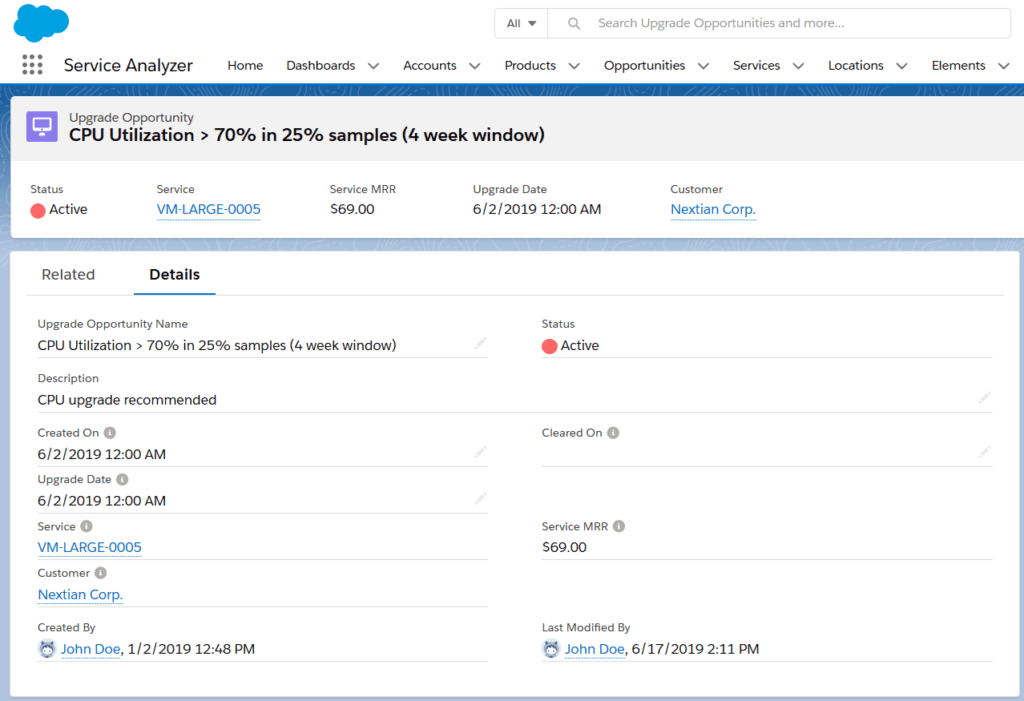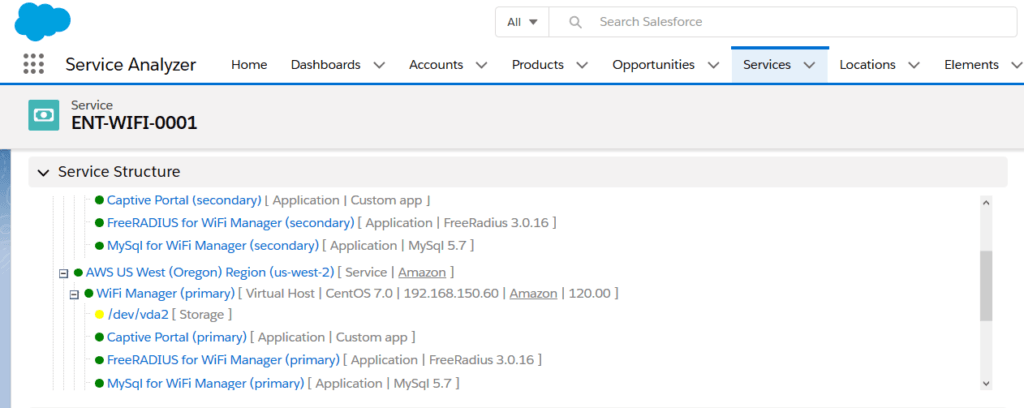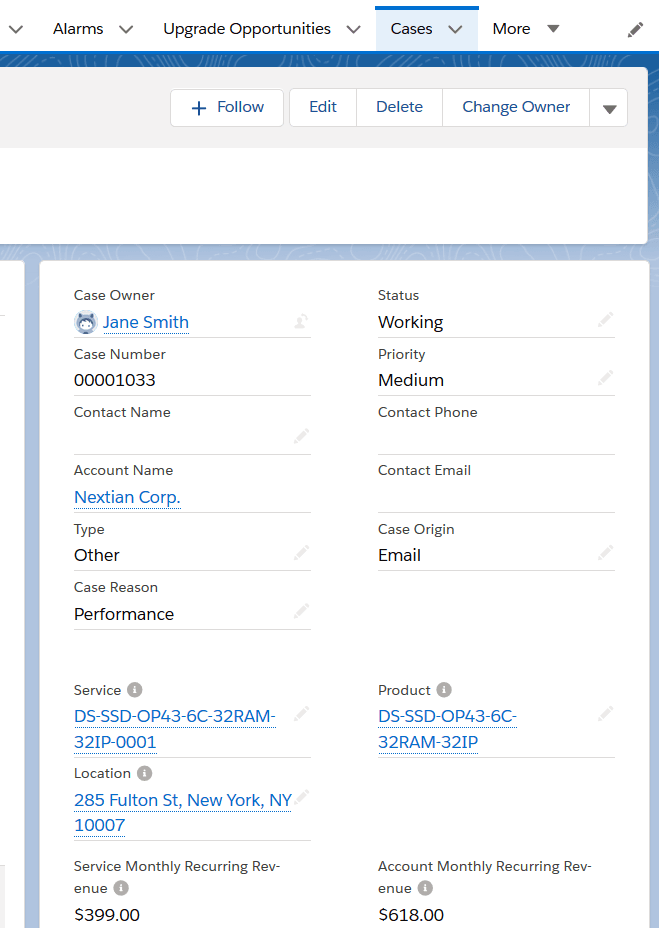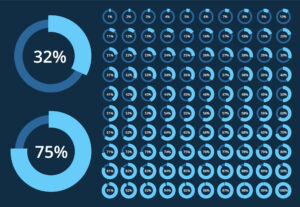Where Today’s Cloud and Communications Network Operations Centers Fall Short
Cloud and communications providers rely on a variety of systems such as NMS (Network Management Systems), RMM (Remote Monitoring and Management), APM (Application Performance Monitoring), and Observability to monitor service availability and performance. These systems track key metrics such as availability, resource utilization levels, CPU loads, latency, jitter, packet loss and more.
In addition to monitoring, providers also utilize ticketing systems to track issues and deliver customer support.
Monitoring and ticketing are typically managed by Network Operations Centers (NOCs), engineering teams, or other technical departments. This siloed structure allows them to provide effective break/fix support to customers.
However, isolation of monitoring and ticketing from business systems (such as CRMs) is a disadvantage that can lead to sub-optimal customer experience, higher churn and increased support costs.
Challenges
The subsequent sections outline the challenges arising from traditional monitoring and ticketing setups and propose strategies to bridge the gap between support, performance monitoring, and business operations to reduce churn and improve customer experience.
Reactive, Break-Fix Response Model
In majority of cases, NOCs as well as NMS/RMM/APM/Observability systems are reactive. When a problem appears, alarm or ticket is created, the problem is diagnosed and resolved. This works well from the break/fix perspective; however it leads to:
- Degraded user experience: Many services will show degraded performance long before the NOC is alarmed as NMS alarms are usually set at warning thresholds.
- Missed revenues: As customers approach capacity limits or need a different product, an alarm typically will not go off until they have already started experiencing problems. This causes business to engage too late in the process.

Fragmented Service Monitoring
Traditional NMS/RMM/APM/Observability systems monitor individual elements (or nodes). Each element represents a single piece of equipment (a router, a firewall, a server, a network interface, etc.) or an application (a SQL database, an Active Directory server, a DNS service, etc.).
However, an individual service usually depends on multiple elements to work properly. For example:
- SD-WAN services may depend on various elements such as the primary internet connection, a backup broadband link, a tertiary 5G wireless connection, and the provider’s SD-WAN controller.
- Cloud applications may depend not only on software but also on OS health, available storage, Internet connectivity, server or virtual infrastructure.
- Internet access services depend on functional customer premises equipment (CPE) as well as additional components like POP routers, DNS servers, and more.

Therefore, obtaining a complete and holistic view of service status requires analyzing and cross-referencing information from multiple elements.
Lack of Service, Account, and Financial Information
Since monitoring systems do not contain business information, the information about account, purchased services along with financial details is not immediately available to the support teams.
Integrating business information with support systems leads to:
- Reduced issue resolution times, minimizing the effort required to investigate and consolidate data from disparate systems. This also results in greater efficiency and cost savings.
- Enhanced prioritization of alarms, outages, and tickets by enabling the easy identification of high-value customers and critical services.

Unifying Service Monitoring with CRM
Nextian addresses the above challenges by consolidating account, service, monitoring and support in the Salesforce CRM.
Why CRM?
CRM systems are ideal for aggregating service status information and insights due to several reasons:
- Existing infrastructure: Service providers typically already have a CRM in place, which is often used to track service inventory alongside a billing system.
- Familiarity and adoption: Sales and account management teams already spend significant time working within the CRM, making them well-positioned to provide additional customer support with minimal retraining.
- Comprehensive customer view: When ticketing (and preferably ordering) are integrated into the CRM, it enables a true 360° view of customer accounts within a single system.
Also, modern CRM platforms like Salesforce, Microsoft Dynamics, and NetSuite are highly customizable and enable the easy creation of extensions and apps to accommodate additional functionality.
Integrating CRM with RMM/NMS/Observability
As mentioned earlier, NMS/RMM/APM/Observability systems work on the element level – they do not know how an element is used in a service. For example, a router is a router no matter if it is a CPE (customer premise equipment) or a core network device.
In order to obtain a full picture of a service, Nextian Monitoring Integration performs the following functions:
- Monitors individual service elements: This includes applications, databases, network devices, network interfaces, and virtualization platforms. Monitoring is conducted directly or (preferably) by gathering data from third-party RMM/NMS/APM/Observability systems, such as SolarWinds Orion, Zabbix, SD-WAN orchestrators and others.
- Runs analytics and generates insights: Service status, availability and insights are derived from the collected data to improve service delivery and performance.
- Pushes information to the CRM: Key information, such as alarms, service health metrics, availability timelines, and upgrade opportunities, is updated in the CRM.
- Facilitates advanced ticketing scenarios such as automatic creation / closure of tickets/cases based on service status.
The following diagram illustrates the overall workflow and integration points:
Adding Ticketing & Customer Support
When CRM and monitoring information is further combined with ticketing and customer support (such as Nextian, Salesforce CRM, and Service Cloud), support teams are provided with additional information, shortening issue resolution times:
- Are there any element outages reported by RMM/NMS?
- Is any of the failing elements managed by a third-party vendor?
- What other services does a customer have?
- Are there any services for other customers that are impacted?
- How much recurring revenue is affected?
More information about implementing trouble ticketing with Salesforce and Nextian is available here.
Conclusions
Monitoring and ticketing are managed by Network Operations Centers (NOCs) and other technical departments, which are usually separate from business teams such as sales, account management, and similar functions.
This isolation of monitoring and ticketing from business systems is a disadvantage that can lead to a less-than-optimal customer experience, increased churn, and higher support costs.
Bridging the gap between monitoring, ticketing and account & service management helps cloud and communications providers to:
- Increase user experience:
- Detect complex issues by combining service structure with element monitoring,
- Shorten issue resolution time by consolidating all customer information in a single system,
- Enable account managers to do a better job by giving them a 360° insight into service status and tickets.
- Reduce costs:
- Shorten time required to gather all information for troubleshooting.
- Increase revenue:
- Proactively and automatically discover upgrade opportunities and pass them to account management.
- Reduce churn:
- Prioritize issues, service outages based on their financial impacts.
Nextian has a proven track record of expertise in integrating diverse monitoring systems — ranging from NMS to SD-WAN and application monitoring — with Salesforce and other CRM platforms, enabling exceptional issue resolution efficiency and an enhanced customer experience.
Contact us today to find out how we can help you!






